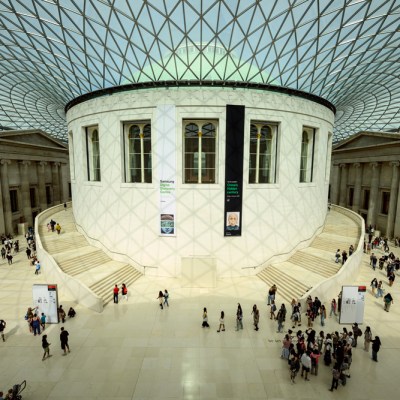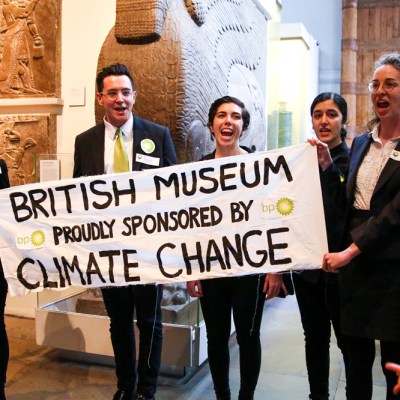Lately the British Museum has been in the news for all the wrong reasons. Plans for a rebrand have been mocked before they have even been started; accepting £50m from BP will make it vulnerable to years of tomato soup; a disgruntled ex-contractor recently managed to shut parts of the museum down after hacking its IT systems; and it remains stuck in the debate around the restitution of artefacts while other institutions move forward. Most astonishingly of all, the museum admitted to the theft of more than 1,500 items in its collection, allegedly by a senior curator, which led to the resignation of the museum’s director Hartwig Fischer in August 2023.
But it has a plan: to rebuild the Western Range, build a new energy centre and perhaps even replace the shabby white wedding marquees that have been ‘welcoming’ visitors for years as they wait to get their bags checked.
Currently on display in the Reading Room are models of the five shortlisted entries from an international selection of architects. There is something perfectly appropriate about these miniaturised buildings in vitrines beneath that vast dome, drowning in epic space. The problem is that this was really an ideas competition, with entrants expected to produce not detailed designs but rather a flavour of what visitors might expect, perhaps in a couple of decades’ time. It’s a curious beginning, a hint of consultation (though it is really no such thing) designed to make us think we are getting an insight into what, once it is underway, will probably be the most expensive cultural project in the UK of its time.
Concept model by David Chipperfield Architects. Photo: © The Trustees of the British Museum
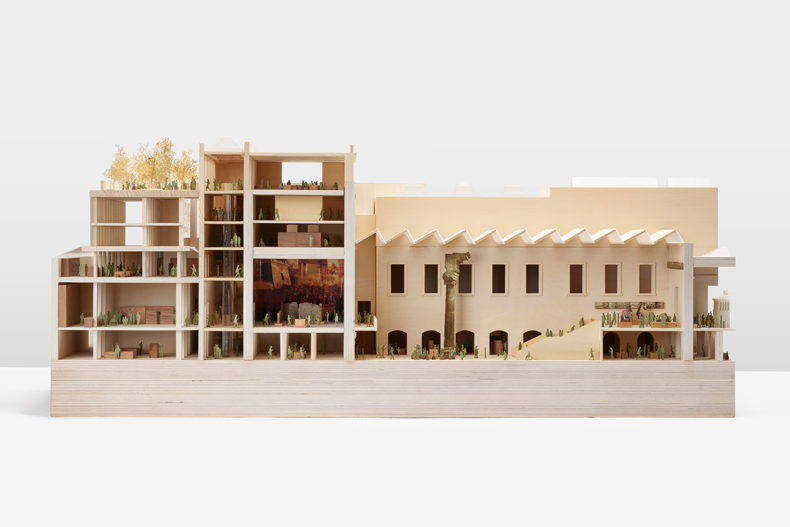
Concept model by Jamie Fobert Architects and Eric Parry Architects. Photo: © The Trustees of the British Museum
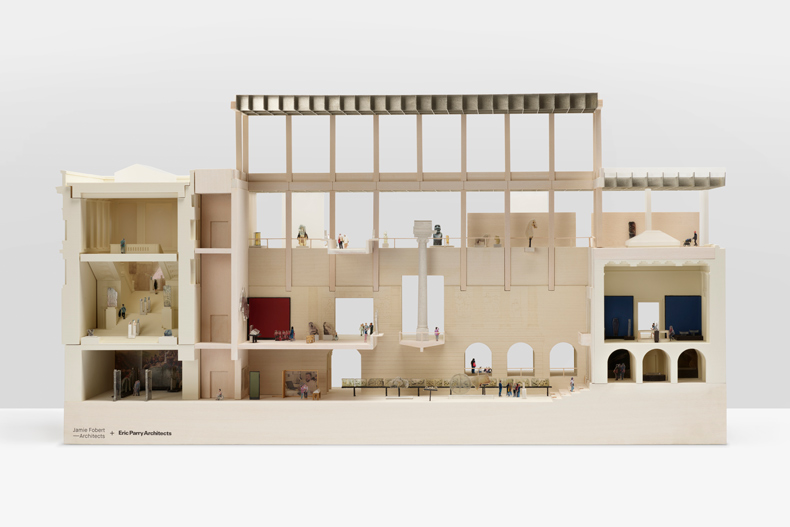
Nicholas Cullinan, who took over as director nearly a year ago, suggests this will be ‘the biggest transformation of any museum in the world – not just physically but intellectually too’. It’s a big claim, and certainly this is a moment in which the idea of museums is undergoing one of its periodic radical shifts. But it is not clear from the five sets of proposals what, exactly, those shifts might entail.
The entries form an eclectic if not entirely unpredictable grouping. There’s Jamie Fobert (who worked with Cullinan on the refurbishment of the National Portrait Gallery when Cullinan was director there), who has teamed up with Eric Parry. There’s David Chipperfield, whose Neues Museum in Berlin remains the benchmark for this kind of project, in which the building is itself considered as a cultural artefact. There’s local practice 6a, whose offices are a few minutes’ walk away from the museum and whose work on both historic and contemporary galleries has been influential and popular (it is currently working on ambitious plans for Tate Liverpool); and then there are two overseas practices, OMA and Lina Ghotmeh, based in Rotterdam and Paris respectively. The former seems to be a little stuck in a techno-future from the past, while Ghotmeh’s work looks a little stagy, albeit also theatrical in a potentially interesting way.
Concept model by OMA. Photo: © The Trustees of the British Museum
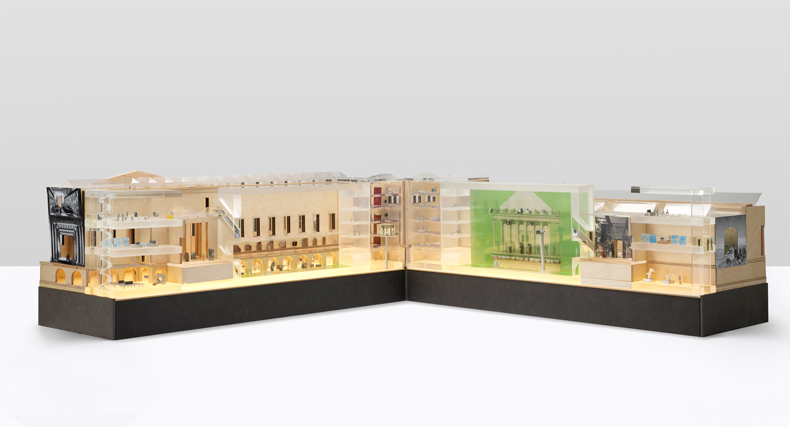
Concept model by Lina Ghotmeh Architecture. Photo: © The Trustees of the British Museum
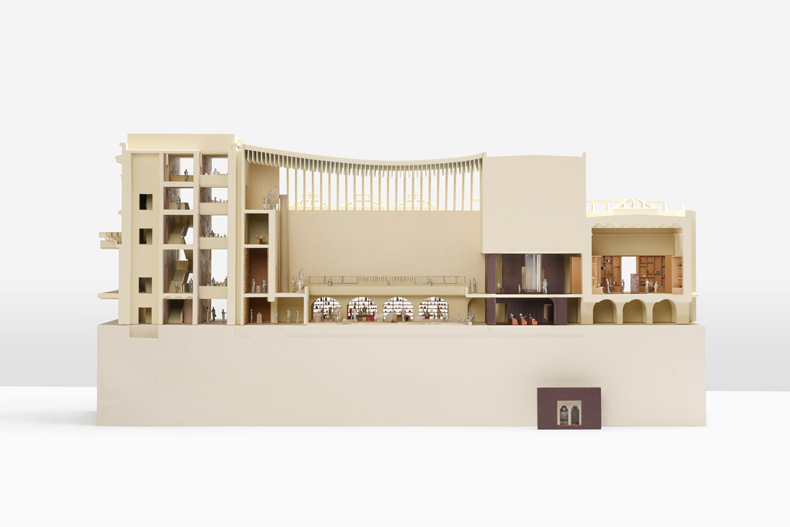
There is a lot of opening-up of space, much written about digital engagement, about dialogue and a more performative kind of museum, but it is difficult to get any real idea of the grain of these proposals, what they will feel like. In effect, they all open up the former courtyards west of the Great Court as a vast exhibition space or series of spaces. There are variations in roofscape (from sawtooth to drape) and in style (OMA’s lurid green and acrylic model looks very plastic nostalgic), while 6a makes a kind of greenhouse with actual plants in a series of gardens and writes about the museum as an ecosystem. There are familiar, much shrunken fragments from the collection, I suppose to situate the viewer in the world of things. In one scheme I even spotted the Parthenon Marbles, which I thought was a brave projection.
Concept model by 6A Architects. Photo: © The Trustees of the British Museum
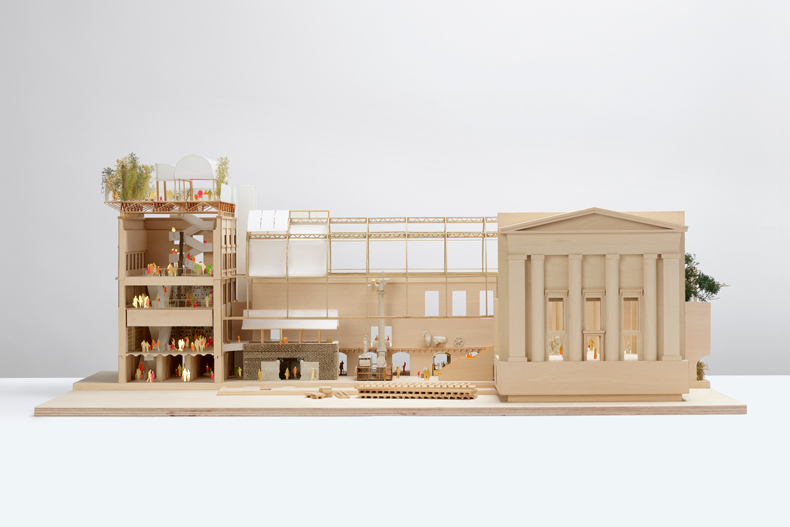
It is striking, however, that there seems, at least to me, to be a lack of stuff. The galleries are inhabited in most cases only by a few, albeit mighty, fragments. Of course, there is an idea here that the museum needs space to breathe, that its densely packed galleries can be exhausting and that these new spaces should introduce a clarity lacking in the current, rather shabby rooms of the Western Range. But there is a counter-argument too. And that counter-argument is the Great Court.
That last massive intervention, designed by Foster & Partners and completed a quarter of a century ago, in 2000, was also intended to introduce light and air, to create a central place to gather and to make the journey through the museum more legible. It does all of that, but it also introduced a space more redolent of an airport than a museum and, in the process, trivialised the Reading Room in which the models are now rather uncomfortably displayed. By introducing a new scale and a new dome/glass bolus around the cylindrical space, the new intervention hugely reduced the effect of the once awesome room so that now it looks itself like a model contained within a generic contemporary space. The problem is visible all around – in a library stripped of many of its books, its desks and its purpose, and in a huge white space that seems to be anchored by a shop rather than any of the artefacts that people have come to see. Meanwhile, throughout the institution, the exhibits abide in either hugely overcrowded or largely ignored spaces.
The Great Court by Foster and Partners, covering the Round Reading Room, is now 25 years old. Photo: © The Trustees of the British Museum
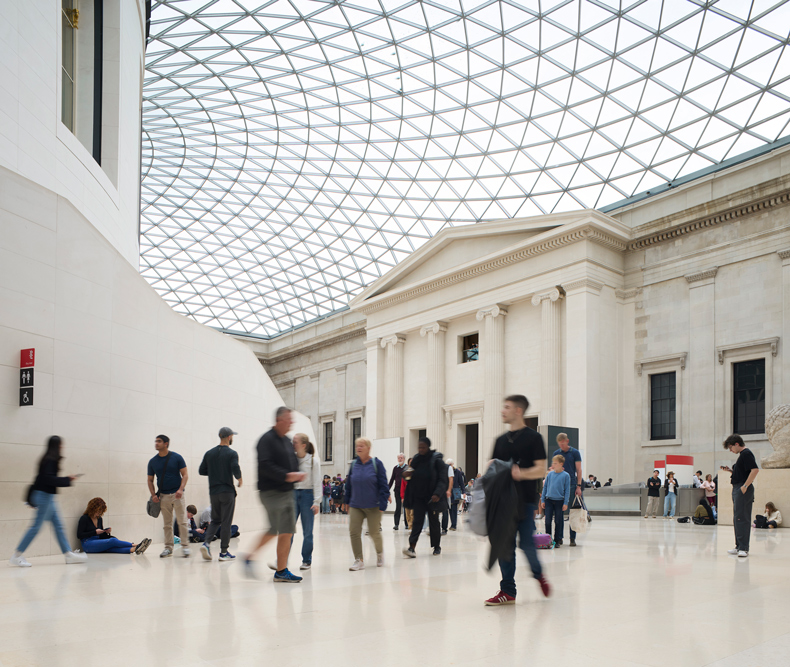
I’m not certain these new plans – or concepts of plans – really address the problems. Several of the designs feature an attempt to carve out new exhibition space in the vaults beneath the building (currently used as storage). This, it seems to me, is where the real action might be, but it is under-visualised here – in fact, almost absent.
Concept model by 6A Architects. Photo: © The Trustees of the British Museum

It seems to me that the future for the museum is underground – a fitting little nod to archaeology. But it also seems that some of the intended thrill is come from the rediscovery of long unseen – or never seen – parts of the building. Perhaps I have too little faith in the ability of contemporary architects to create persuasive and engaging spaces on a grand scale; perhaps I am too attached to museums as places of random discovery, in which endless arrays of artefacts occupy dusty vitrines and part of the thrill is in the sifting through of the exhibits. Perhaps I’d like to see more of the museum’s eight million artefacts than the one per cent currently on display, rather than fewer.
It might also be, though, that the most successful museum interventions of the last few decades have been as much about the rediscovery of the existing building and its history and the changes in fashion, taste and use inscribed in its fabric as about the displays and the artefacts. The British Museum is a cultural artefact in its own right and one that needs to be treated with love, care and profound attention – one that needs to regain the affection and delight of its users, local as well as global.
The winner of the British Museum’s architectural competition will be announced in March.

